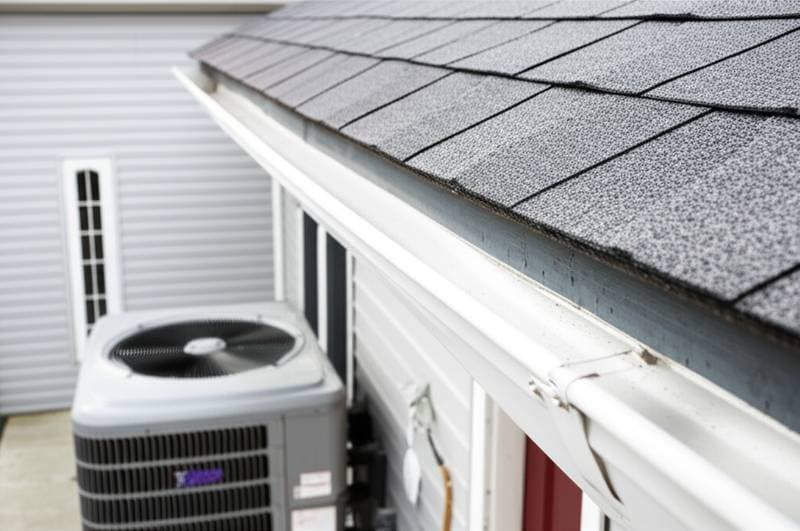Introduction to Spring Home Maintenance
Spring marks the ideal time for homeowners to address maintenance needs before seasonal weather intensifies. Neglecting these tasks can lead to significant structural damage and unexpected expenses. By prioritizing a structured routine, individuals can extend the life of their property while minimizing long-term costs.
This article outlines critical spring activities, each designed for straightforward execution. Homeowners will find detailed guidance on materials, difficulty levels, and potential savings. Completing these steps ensures a secure and efficient home throughout the year.
Smoke and Carbon Monoxide Detector Checks
Materials: Batteries
DIY Difficulty: 1/5
Professional Cost: $0 for DIY, $150 to $300 for full system check
Safety checks frequently receive less attention amid spring cleaning efforts, yet they remain vital for household protection. Begin by replacing batteries in all smoke and carbon monoxide detectors, then test each unit to confirm functionality. If any detector exceeds ten years in age, replace the entire device to maintain reliability.
Modern smart detectors offer enhanced features at accessible prices and connect to smartphones for instant notifications. Such upgrades provide substantial peace of mind. In addition, they may qualify homeowners for reduced insurance premiums through demonstrated safety commitments.
Gutter Cleaning and Inspection
Materials: Ladder, gloves, garden hose, debris bag
DIY Difficulty: 2/5
Professional Cost: $0 for DIY, $150 to $400 depending on home size
Clogged gutters pose a primary risk during spring rains, as accumulated debris from winter can cause water overflow and foundation erosion. Schedule a thorough cleaning by climbing a stable ladder to remove leaves, twigs, and sediment from all sections. Follow up with a hose flush to clear remaining particles and inspect for damage like loose brackets or rust.
Proper maintenance here prevents water intrusion that leads to siding rot or basement flooding, repairs for which often exceed $2,000. Homeowners who perform this task annually report fewer water-related claims. For multi-story homes, consider professional assistance to ensure safety and completeness.
Roof Inspection and Minor Repairs
Materials: Binoculars, roof rake, sealant kit
DIY Difficulty: 3/5
Professional Cost: $0 for basic DIY, $300 to $800 for detailed inspection
Roofs endure harsh winter conditions, making spring an optimal period for evaluation. Use binoculars from the ground to scan for missing shingles, cracked flashing, or granule loss on asphalt surfaces. For accessible areas, gently remove loose debris with a roof rake and apply sealant to small gaps around vents or chimneys.
Early detection avoids leaks that escalate into full replacements costing $10,000 or more. Document any concerns with photographs for professional review if needed. Regular inspections, conducted twice yearly, significantly prolong roof durability and preserve home value.
HVAC System Servicing
Materials: Screwdriver, air filter, vacuum cleaner
DIY Difficulty: 2/5
Professional Cost: $50 for DIY filters, $100 to $250 for professional tune-up
Heating, ventilation, and air conditioning systems require attention after winter use to prepare for summer demands. Start by replacing or cleaning air filters to improve airflow and energy efficiency. Vacuum accessible vents and coils to eliminate dust buildup, then check thermostat settings for accuracy.
Neglected HVAC units strain energy consumption, potentially increasing bills by 20 percent or more. A clean system operates more effectively and reduces breakdown risks during peak heat. Schedule an annual professional tune-up for comprehensive diagnostics, including refrigerant levels and electrical components.
Sealing Air Leaks and Insulation Review
Materials: Caulk, weatherstripping, insulation foam
DIY Difficulty: 2/5
Professional Cost: $20 to $100 for DIY supplies, $200 to $500 for energy audit
Air leaks around windows, doors, and outlets contribute to higher utility costs and discomfort. Inspect these areas for drafts using a hand test or incense smoke, then apply caulk to cracks and weatherstripping to frames. Review attic insulation levels and add material if depth falls below recommended standards for your region.
These measures can cut energy loss by up to 30 percent, yielding hundreds in annual savings. Improved sealing also enhances indoor air quality by reducing pollutant entry. For complex issues, an energy audit identifies hidden inefficiencies with precision.
Prevention Payoff
Consistent maintenance yields returns that far outweigh initial efforts. For instance, ignored gutter issues often result in roof leaks requiring thousands in fixes, while HVAC neglect inflates energy expenses over extended periods.
When the author purchased the current residence, the financial consequences of postponed upkeep became evident after one season. Repairs then amounted to nearly three times the expense of preventive actions. Since establishing a dedicated spring routine, annual repair outlays have decreased by approximately 40 percent.
Early identification and swift corrections enable homeowners to sustain property worth, limit insurance filings, and prolong the service life of essential systems. Such practices foster long-term financial health and residential stability.
Implementing Your Spring Maintenance Plan
Dedicate one weekend to exterior evaluations and another to interior assessments for manageable progress. Develop a straightforward checklist, assigning specific dates to each item. Allocate a modest budget of about $500 for necessary tools and small corrections.
Upon identifying substantial problems, seek out licensed specialists in the local area to obtain multiple estimates. Refrain from accepting the initial proposal hastily, particularly amid supply constraints. Homeownership involves ongoing care, yet it need not overwhelm.
Methodical attention to spring duties shields both the structure and finances. Each averted repair equates to preserved funds and reduced anxiety. Maintain vigilance, prioritize safety, and allow spring to renew the care your home merits.



